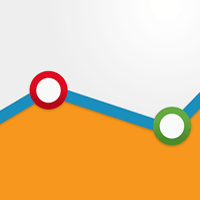Google Analytics Visualizes Visitor Flow

 Google has announced a new feature for its Google Analytics product called Flow Visualization, which, not suprisingly, is a tool for visualizing visitor flow.
Google has announced a new feature for its Google Analytics product called Flow Visualization, which, not suprisingly, is a tool for visualizing visitor flow.
On its blog, the company says that many users have expressed interest in a product that will provide "better ways to visualize and quickly find those insights about how visitors flow through your sites." The Google Analytics design team opted not to build individual path analysis, but rather came up with Flow Visualization to make it easier for marketers and analysts to better optimize their visitor experience "by presenting the ways that visitors flow through their sites in an intuitive and useful way."
The tool works by showing users site insights in a graphic, which allows them to instantly understand how visitors are "flowing" across pages on the site.
Flow Visualization is split up into two different services. The first is Visitors Flow, in which the graphics in question can be viewed by traffic source, or any other dimensions, and allow site owners to track a visitor's journey, including where they drop off. The graphics will provide instant insights into how many visitors are on and interacting with the page.
Google Analytics provides high levels of interaction with these visualizations, allowing users to do things like highlight different pathways or see information about specific nodes and connections. This helps owners to address crucial, specific questions, "such as 'How successful is my new promo page?'"
The feature even allows users to focus more precisely on one node by "exploring the traffic." Owners will be provided data on all of the visits that lead to that node, as opposed to just those that come from "top sources in the Visitors Flow." Paths can also be traversed forwards or backwards.
Goal Flow is the other part of Flow Visualization, and it provides users with graphical representation of the ways in which visitors flow through specific "goal steps" (and where they dropped off). Goal steps are defined by site owners to represent important pages and page groups that are of highest interest to the site. This allows users to see exactly how visitors arrive at pages of interest by selecting that page and visualizing backwards; these "reverse paths" should help owners find the best choices for suboptimal placement of content.
Forward paths can be visualized as well, which helps users see which pages are most visited from goal steps or "to see visitor flow leakage that a site owner might be unaware of."
"These two views are our first step in tackling flow visualization for visitors through a site," says the Google Analytics team on their blog.
Flow Visualization was announced yesterday at the Web 2.0 Summit. Google Analytics hopes to release other types of visualizers in the coming months.








